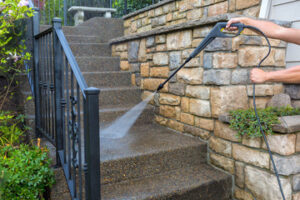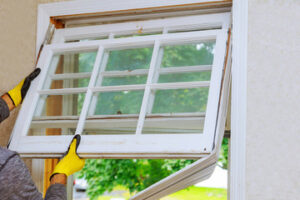A well-designed landscape enhances the beauty of your home or business and increases its value. Studies show that walking through a garden reduces stress and improves attention and memory.
Burlington Landscaping involves adding plants, changing the terrain, constructing structures like fences and walls, and maintaining these features.

Color plays a major role in landscaping and can enhance the aesthetics of your home. Whether designing a flower garden or choosing the right colors for hardscapes and accents, understanding how to use color in your landscape can help your design come to life.
One of the most important things to keep in mind when selecting a color scheme is what other elements are present in your yard. If you have a house with warm earthy tones, for example, adding brightly colored flowers in a similar hue can create a sense of continuity between the indoors and outdoors.
Another consideration when choosing a color scheme is the effect that light will have on the colors. Depending on the time of day and the direction that sunlight comes from, the brightness of the sun can alter how intense or subdued a particular color appears.
When using color in your landscape, it’s also important to understand what constitutes a shade and a tint. A tint is when you lighten a color by adding white. A good example of this is pink, which is a tint of red. Shades are when you darken a color by adding black. A navy blue is a shade of blue. Knowing the difference between these can drastically change the impact of a color or the focal point it creates in your design.
The color wheel is a tool that can be used to help find complimentary colors for your landscape. Complementary colors are those that are opposite on the wheel, such as yellow and purple or red and orange. These pairings tend to be bold and eye-catching. Professional sports teams often use complementary colors for their uniforms because they look great together.
Analogous colors are those that are next to each other on the wheel, such as yellow, green, and red-orange or blue, purple, and violet. These pairs of colors look similar to each other and can be very effective in your landscape design.
Many homeowners choose to prioritize unity when they plan their landscapes, aiming to make the various areas of their yards feel like they belong together, even if there is variety within each area. This can be achieved by using the same plants throughout different planting beds or by incorporating similar materials in hardscapes and walkways.
Form
In horticulture, form refers to the three-dimensional qualities of a plant or landscape element. It influences the way it interacts with other plants and structures, and how light penetrates the space. Plants with unique forms can serve as focal points or draw attention. They can also be used to create natural patterns in the landscape. Form contrasts with lines, which are two-dimensional. A landscape design with a variety of forms can prevent it from feeling stark and cold.
When choosing the right shrubs for your garden, consider their form to determine how they will work in your landscape. For example, upright, vase shaped and rounded shrubs are often applied in mass for their formal, structured appearance while irregular and cascading forms are more commonly used as focal points or accents.
Form is influenced by the overall landscape theme, which can be determined by the style of your home or by your personal preference. For example, a Zen garden is designed to be peaceful and tranquil, while English gardens are characterized by their classic and formal beauty.
Landscapers must always keep form in mind when creating a garden that complements the architecture of your home or business. To do this, they must carefully choose the right shrubs and plants for your outdoor spaces, then arrange them so that they are aesthetically pleasing and functional.
Whether you are looking for an outdoor living space or a place to grow edibles, the type of landscaping you choose can affect your property value. In fact, the American Society of Landscape Architects reports that homes with professionally landscaped yards sell for 20% more than those without.
Landscaping involves more than just planting trees, shrubs and flowers. It can involve hardscaping and installing various structures like patios, walkways and garden paths. It can also involve soil improvement techniques like aeration, dethatching and mulching. Lastly, it can include maintenance tasks such as pruning, mowing the grass and weeding.
A well-maintained landscaping yard is a great way to add curb appeal to your home or business. It can also increase your property value, improve the environment and lower your energy costs. When looking to sell your property, a well-groomed yard is the first thing prospective buyers notice and can make a big impact on their decision.
Lines
Lines are one of the most important design elements in a landscape. They create patterns and movement and are the foundation of all forms in the landscape. They can be straight, curved, thick or thin. They can frame a view or draw attention away.
Lines create rhythm in the landscape by creating repetition of form, color and texture. Repetition should be used sparingly, however, as too much repetition can become monotonous and confuse the eye. Lines can also create a sense of movement through the landscape by leading the eye from one area to another, or by creating a pathway that beckons you into the landscape.
Landscape sight lines can have a big impact on how a garden feels, but they’re not always obvious. Sight lines can make a space feel more intimate or expansive depending on the direction they point and the features used to create them.
For example, straight lines and hard angles give a landscape a formal feel, while curves and organic lines give it a more relaxed, natural appearance. Acute angles, which occur when design lines meet at less than 90 degrees, are best avoided as they can be difficult to walk over or see in the landscape and they create weak areas that are prone to cracking.
Lines can also create a sense of proportion in the landscape by establishing scale and balance. This is especially important in small spaces where every element needs to be carefully considered. The size of an object in relation to other elements is called scale and is a crucial part of the design process.
In addition to vertical and horizontal lines, landscapers can use diagonal lines to create a dynamic effect. Diagonal lines lead the eye in a different direction and can emphasize a focal point or draw attention to a particular feature.
Other types of lines include meandering lines, which mimic the undulating edges of natural materials like plants and rocks and can be found in rock gardens and dry creek beds, and straight paths that guide the eye to a focal point or a secondary path within the landscape.
Unity
Unity is the concept of making all of the separate components of your landscape work together to create a great whole. This can be achieved through repetition and consistency. For example, using the same plant type in different areas of your garden increases cohesion and provides a sense of continuity. Also, using similar textures and colors across the landscape creates unity. A good way to start creating unity is by choosing a design theme and sticking to it when selecting plants and hardscape materials. This is similar to how a theme for a room in a house can help with the design process.
One of the easiest ways to create unity in a home garden is by using curved lines in your landscaping. Curved lines can be used in paving, edging and bed shapes to create flow and a sense of connection between different garden areas or “rooms” in your yard. For example, if you have a sunken garden and a raised vegetable garden on opposite sides of your house, use curves to link the two spaces by wrapping them both with the same paving material or by connecting them with the same flowering tree or shrub.
Another aspect of unity is proportion. This refers to how large or small the various elements of your landscape are in relation to each other. For instance, large trees and plants should be proportionally smaller than the smallest shrubs and groundcovers. This ensures that your landscape is balanced and has a natural feel.
Using color as a tool to manipulate the other design principles is another way to achieve unity in your landscape. However, it is important to avoid overusing color because it can quickly become overwhelming and distracting.
Line is another important factor in landscape unity because it can create a sense of rhythm and balance in the garden. This can be done by creating a series of lines that connect the different parts of the garden, or by adding line to focal points like fountains and sculptures. For example, curved lines are more fluid and soft, while straight lines are forceful and structural and can be used to guide the eye across the landscape.







